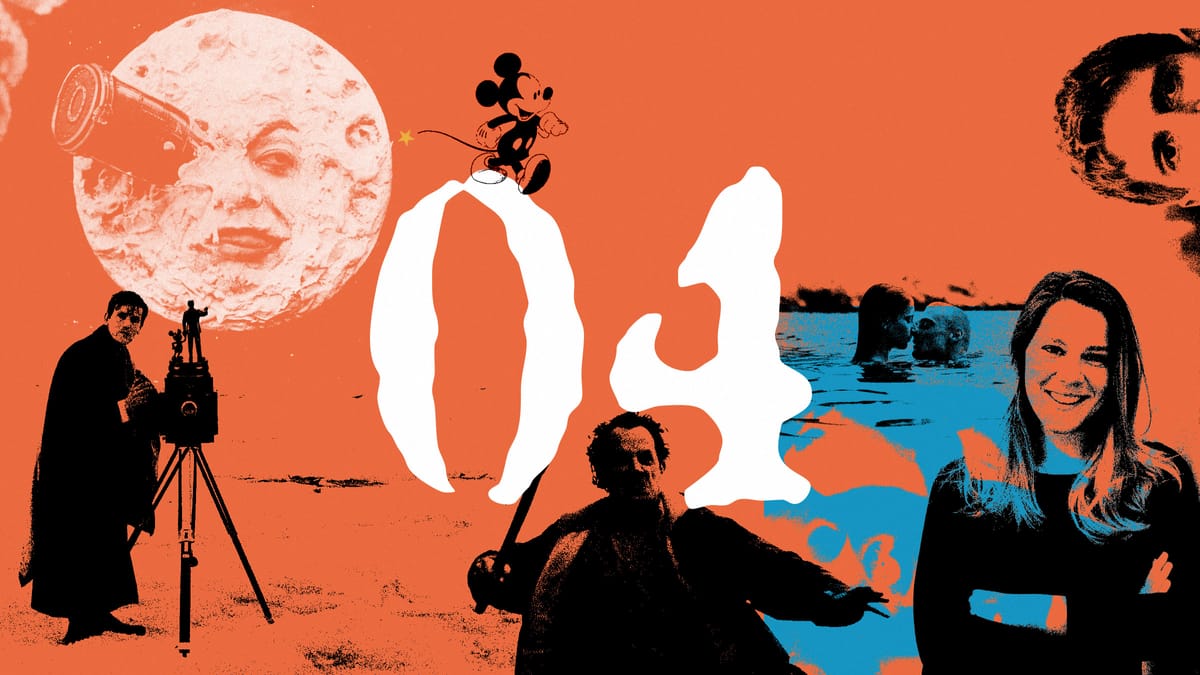On Film Criticism #10: And Still The Sun

Artwork by Neven Udovičić
Again morning — sun-draped terrace — Sapphire sea — all the world on a holiday — Rifle Fire — Brooding doves — Brutality of man — and still the sun.
Intertitle from Erich von Stroheim’s Foolish Wives (1922)
Summer is here! In the Northern hemisphere, the weather is getting warmer, the sky bluer, we can hang out outside with friends and almost forget about Covid. The mood is easy-going, and we feel we deserve a break from — now wait a minute. One glance at the news and it becomes hard to ignore: things appear to be almost comically awful on all fronts. The Earth continues to burn while politicians lock up protesters; abortion in America is once again a crime; Ukrainians are still being murdered; refugees are treated like cattle; and thousands of people will soon have to choose between feeding their children and heating their homes.
In the middle of all this darkness, what is there to enjoy? Plenty, some say. During tough times (and surely, our times must be the toughest the world has ever seen), we may turn to art. But only the kind that makes us feel good: life is uncomfortable enough as it is. In this context, having reservations about (let alone disliking) a work of art is basically a crime: telling people that the one thing that brings them joy is stupid, is a violent and cruel act. After all, what if this innocuous, life-affirming, feel-good art was more than just art, but something we could use: a source of hope, a reason to go on — a religion? Caspar Salmon writes about the phenomenon in his essay, identifying a desire to take refuge in the familiar and a lack of curiosity in a culture that encourages grown adults to fetishise Disney movies and other childish fare.
The idea of legitimising this obsession by labelling it a religion speaks of a generalised mood of complacency where, ultimately, all that matters is that the individual consumer feels good. So what if Disney refuses to take a stand on human rights its films purport to defend? So what if Marvel is just another weapon in the arsenal of the military industrial complex? The viewer is powerless when it comes to such social ills; but, of course, they can claim the power to consume crap anytime.
Marketed as a takedown of classism, selfishness and middle-class hypocrisy, the British cringe comedy All My Friends Hate Me is only ever a bleak joke at the expense of the one character within the film to have any awareness of his position in society, a basic sense of self-respect, or a desire to change, writes Fedor Tot. The character’s discomfort ultimately dissolves, as if to assuage the viewer, too, of any feelings of guilt.
What so troubles the protagonist from All My Friends Hate Me is our century’s mal du siècle: it can be hard to tell the difference between blissful apathy and the satisfaction of having contributed something to the fight for a better world. Taking his cue from an essay I wrote in the first issue of 2022, Daniel Bird returns with a powerful look at the prism of representation in cinema, an approach that has many undeniable positive uses, but one which is also taken advantage of by parties interested in appearing progressive when they are anything but. It can seem difficult to escape the limitations of this now firmly ingrained conception of the relationship between cinema and ourselves, but in looking back at the history of film criticism and film theory, Bird’s essay reminds us that this dominant vision once was but one of several ways in which cinema could be understood to relate to us and the world.
Two interviews with directors who offer possible ways out of this conundrum conclude the issue. Although I wrote in April about Antoneta Alamat Kusijanović’s Murina as a film that captures the extremely specific experience of being brought up by parents born in the former Yugoslavia, I was curious to know what other viewers might make of it. After finally seeing the film on the big screen, I suspected that I wasn’t touched by it just because I could “relate” to its protagonist. In our interview, Kusijanović talks of people from all around the world writing to her about how precisely the film has captured an aspect of their lives, a long way from Croatia. Beyond representation, there are simply “universal emotions that exist in every culture,” and which a good filmmaker can bring to the fore.
Meanwhile Godland, from Icelandic director Hlynur Pálmason, questions the very place of man in the order of the universe, and in time itself. Mark Asch’s interview with Hlynur reveals a filmmaker who uses cinema to access another temporality, both through his general art practice and within the resulting film itself. His journey to making Godland, like that of the film’s protagonist as he travels across Iceland, was arduous. The director did not take the easy way out. As we watch this long, slow film, we come to feel and understand the value in that.




